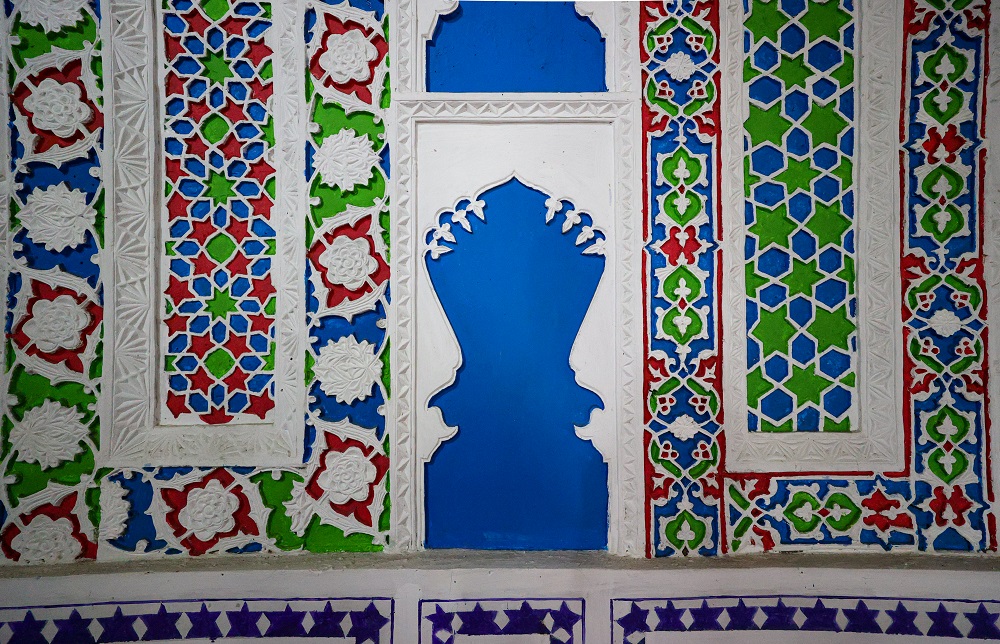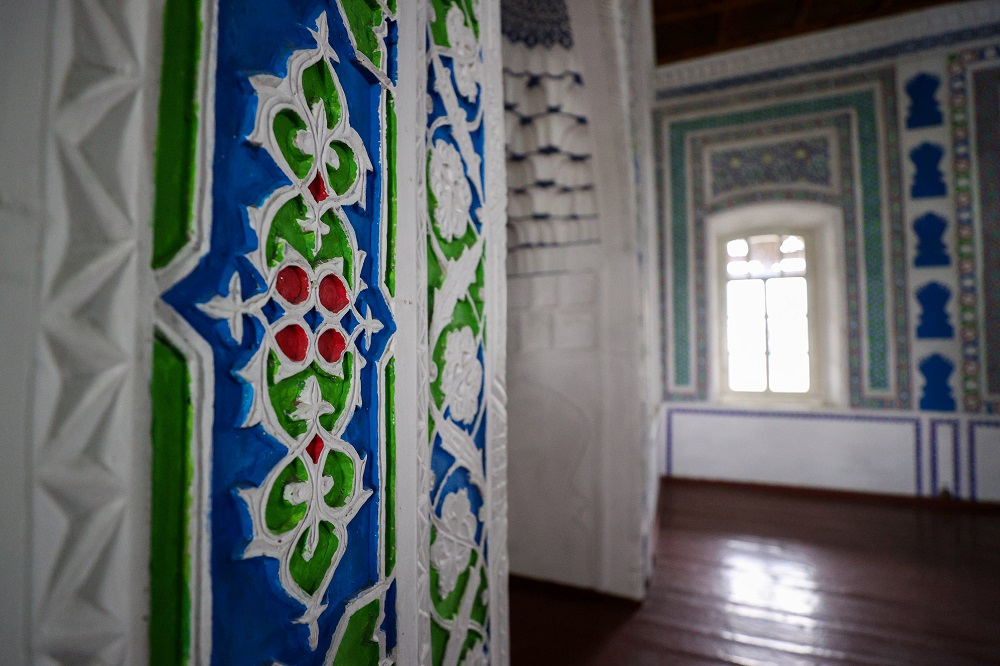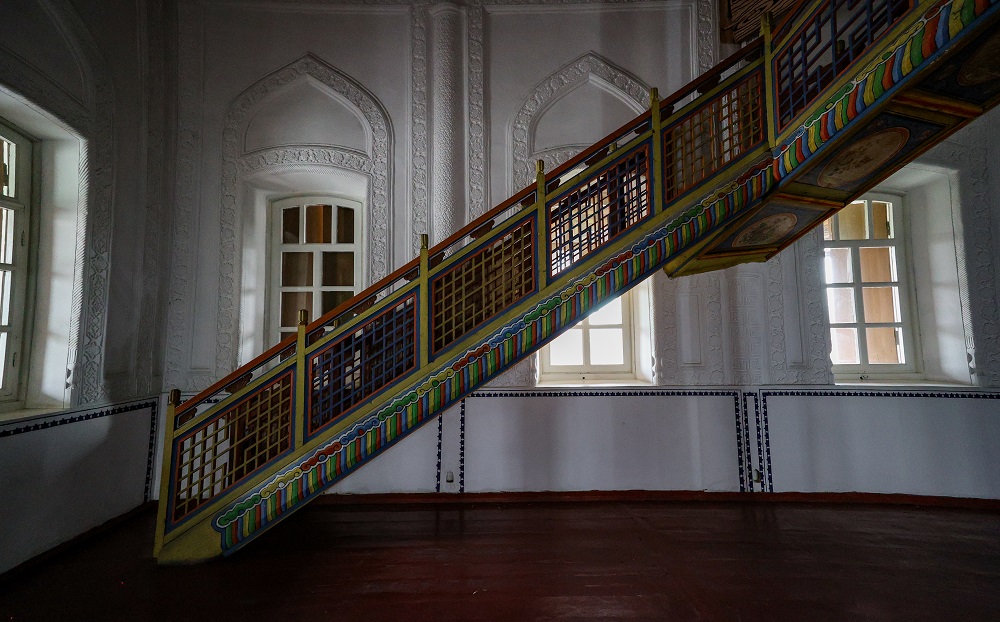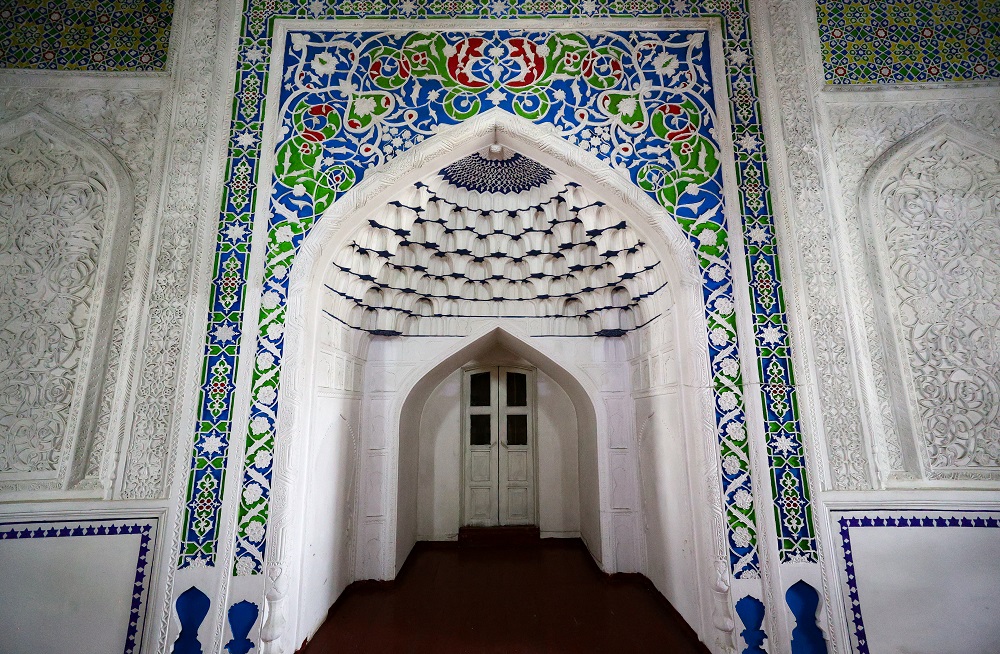The town of Jarkent (Kazakhstan) was founded in 1882 on the border of China as a trade settlement, where many ethnicities were merchants: Kazakhs, Uighurs, Russians, Dungans, Chinese. Trade flourished, the town developed, while local merchants invested money not only in their businesses, but also in the town architecture. As a result, a unique wooden mosque built in the form of a Chinese pagoda, a multilayer Buddhist or Taoist temple, has reached our days.

The idea to build a mosque in Jarkent belonged to local merchant Vali Akhun Yuldashev. He managed not only to organise a fundraising campaign, which raised generous donations from the Muslim merchants, but he also invested a big sum in the construction. Architect Hon Piquet, specially invited from China, guided construction of the mosque, and Jarkent-based Uighur contractors helped him.

Construction of the mosque started in 1887. The construction process resembled the Lego construction set, which was first designed for a long time, with elaboration of new details, and then was assembled following the building instructions. The same happened to the mosque: preparatory construction works took most of the time, when contractors worked with the timber for many years turning tall Tien Shan spruce into columns, which held a high multilayer roof, came up with unique details for decoration, carved patterns for the décor, which still decorates the mosque both from inside and outside. In 1892, when all elements were finally ready, the building was assembled in several months. The Jarkent mosque does seem to have a single nail in it.

The Jarkent mosque consists of a group of several buildings, including the main building, so called juma-mosque, a small mosque, and a Muslim religious school madrasah. They all are enclosed by the rock wall with large gates, well preserved until our days.
“Our mosque is the most popular tourist site of Jarkent. Tourists from France, Singapore, Japan come to us,” said guide Aliya. “Recently, we have many tourists from China, who are interested in seeing the subject of Chinese architecture beyond their country. Many tourists do not come direct to Jarkent, it is just a point of large tours across Kazakhstan and Central Asia. However, our town and its sights have received much attention in recent years.”

They say that the main hall of the Jarkent mosque could hold up to a thousand believers. The photo shows the very columns made of Tien Shan spruce, which were installed during construction on the rock foundation so that the wood did not decay. In the Soviet period, during restoration works, the wood columns were covered with gypsum for preservation, which was later removed to reveal the original beauty.

The beams and supports, which hold the roof up, are also made of Tien Shan spruce trunks and they have a complex architectural structure, which is autonomous and not linked with the building walls.

On the ceiling of the main hall of the mosque there are Chinese hand-made lanterns, which remained intact in their original form until our days. Every lantern is decorated with unique floral patterns.

The patterns and ornaments of the décor, which ‘remained’ until our days, were inspired by the Chinese and Uighur folk pictorial art: animals, birds, plants and landscapes.

One of the landscapes painted on the back side of the second floor staircase.

The fate of the Jarkent mosque has been a complex one. In 1910, it survived a massive magnitude 8 earthquake, after which the building had to be fully renovated. In the Soviet years, it was a military barrack, vegetable store cellar, corn house, and even a film theatre. So, the most miraculous thing about the building is not its beauty, but the original condition it was able preserve to date. A decision to restore the mosque was made in the 1970s, and the museum of architecture and art was opened in 1978.

A big hall of the mosque consists of two floors, but tourists may not get to the second floor because the staircase is too worn out and cannot endure the everyday load of travel groups. According to the museum curators, the Jarkent museum is visited every day by thousands of tourists from all over the world.

Just like everything in the building, the second floor staircase is a distinct piece of art. It is decorated by an intricate carving and multi-coloured patterns.

One of the most beautiful spaces in the mosque is a minbar, a pulpit from which the sermon is delivered. It is placed at the end of a large hall behind a low wooden partition. There are two high windows decorated by an intricate mosaic on both side of the minbar, and painted Chinese lanterns hanging from the ceiling.

The Jarkent minibar is stylised in the form of a pagoda and decorated by an intricate carved ornament in the form of a bouquet of peonies and chrysanthemums. When you look thoroughly at every detail of the carving, you want to violate the museum rules and touch this beauty. However, you may not enter the minbar, just as the staircase.

The minbar is always constructed higher than the main hall because the imam has to address the people from the elevation. There is a mihrab, a niche in the mosque wall indicating the direction of Mecca, behind the minbar.
“Of course, this is our cultural heritage,” said Tuglugzhan Niyazov, resident of Jarkent. “However, it is a pity that the mosque has turned into a museum and is unavailable for praying. My ancestry lived in Jarkent from the day of its establishment; they attended prayers here.

According to art historians, the ornaments used in the mosque decoration, are closer to the Uighur folk painting rather than to the traditional cult Islamic architecture, while motifs of plants and patterns that decorate the mosque finish represent the local flora.
All photos: Akhmet Isayev

